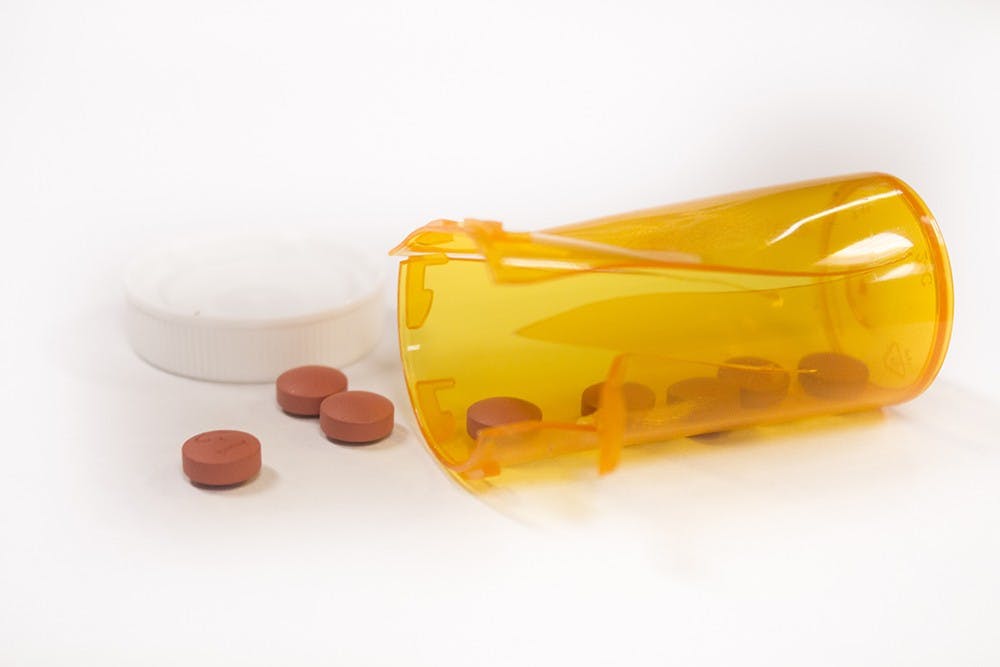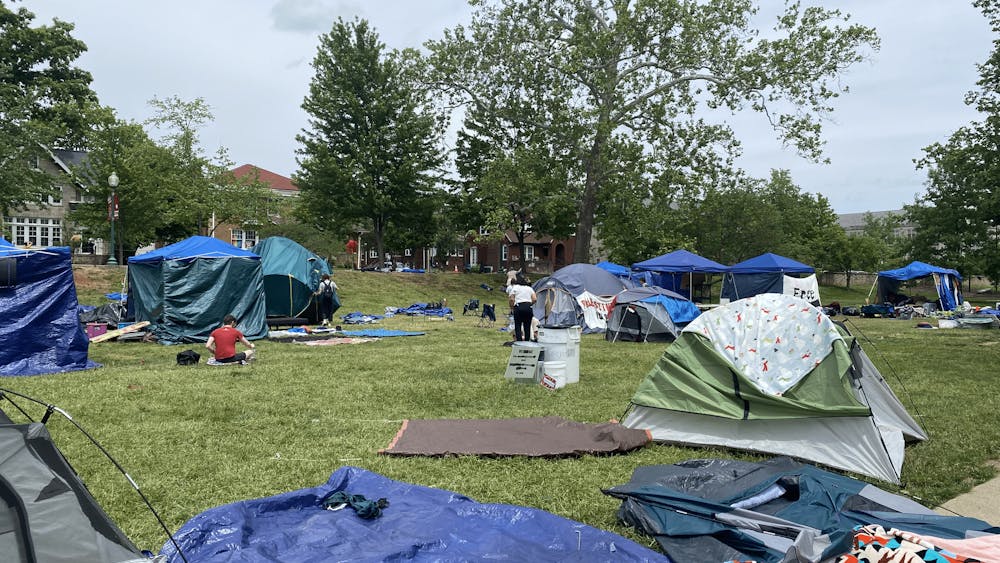All these things were in a safe in IU freshman Kaden Ignelzi’s room the day he was arrested and charged for dealing a controlled substance.
Officers did not expect to find prescription medication in Ignelzi’s room. They entered the room Jan. 10 in search of the source of the marijuana smell wafting down the Wright Quad hallway.
This is how prescription drug abuse is usually discovered on campus, IU Police Department Capt. Andy Stephenson said. Medications are found while officers are responding to something else.
Prescription drugs are becoming one of the most common substances abused by IU students, Stephenson said. Pills are small and easy to conceal, and unlike marijuana, they have no odor. This makes them nearly impossible for officers to find.
“This is part of why we think it’s becoming such a big trend among college students,” Stephenson said. “It’s one thing to try to carry a huge case of beer into a dorm room. But you can just put a bag of pills in your pocket and nobody will know.”
Over the last seven years, an average of 11.4 percent of students at 12 different colleges in Indiana reported using prescription medications that did not belong to them, according to annual surveys by the Indiana Prevention Resource Center. An average of 3.9 percent reported abusing or overusing their own prescriptions.
The most commonly abused medications are Adderall, Xanax and codeine.
One or two students die of an overdose each year, Stephenson said. Many combine alcohol and drug use, which increases the chance of serious harm.
“Crime is only part of the picture,” Stephenson said. “Think about students’ health, and the cost of dealing with that. Think about the toll it takes on academic performance.”
The Office of Student Ethics is in charge of the disciplinary process for students caught in a violation of the IU Code of Conduct. In many drug abuse cases, students are sent from them to OASIS. OASIS helps about 2,000 students each year find resources and programs to reduce risky behaviors and drug use.
OASIS finds themselves fighting an uphill battle, Jackie Daniels, the office’s director, said. Despite the office’s commitment to anonymity, students fear OASIS will call the police. They trust rumors over statistics on how dangerous their behavior is. They will admit to using drugs, but not to possessing or selling them.
Daniels said she tries to understand. She abused painkillers in her own college days. But it was dangerous then and is still dangerous now, she said.
“You operate differently when you have an addicted brain,” Daniels said. “The power, money and pleasure are very attractive things. But no one is as invincible as they think. Your body can only take so much.”
Despite these roadblocks, Daniels said she has seen certain trends that bring her hope. More students come to OASIS on their own, and some students talk to the office when they are worried about a friend.
More importantly, Daniels said, students who struggle with substance abuse are stepping forward to help each other.
Junior Jake Desmond is one of these students. He started drinking in junior high. In high school, he began using psychedelics and prescription drugs, and continued to drink, smoke and abuse drugs throughout his first year of college in the fall of 2012.
“I had friends doing things like injecting sour gummy candy with Xanax, and I always told myself I was fine because I definitely wasn’t doing anything that intense,” Desmond said. “But what I couldn’t see is that the things I did were just as bad. The actual rate of people doing what I did is minuscule.”
Desmond’s parents helped him through an inpatient treatment program, a men’s retreat in Tennessee and more than 10 months of transitional housing in Indianapolis. He has been sober since July 1, 2013.
He started working part-time and taking classes at IU-Purdue University Indianapolis. He re-enrolled at IU in the fall of 2014, and one of the first things he did was help start a group called Students in Recovery-Bloomington.
“I knew I didn’t want to do any of that again, but when that’s been your whole life, how do you have fun while you’re sober?” he said. “It’s not just me, either. We all wanted to find things we could do. And we’re fighting for the resources and help that we need.”
Sophomore Quinn Bush, a member of Students in Recovery, considers the group his best friends. After about two years away from school, he made it a point to find a recovery group before he re-enrolled at IU.
“It’s a little weird, because I’m closer to drugs and alcohol here than I’ve ever been, but I want so much more to stay sober now that there’s no way I’d get involved again,” Bush said. “The friends I knew before I was sober just sort of filtered out of my life. These are the good people I know, and they’re the ones I want to surround myself with.”
The group goes bowling, has pizza parties at Desmond’s apartment and did a “coffee crawl.” Desmond said being able to help a few people like him has given him more of a purpose while he’s here. He plans to go to medical school after he graduates.
“I’ve learned that unless my advice is asked for, it’s not my place to give it, and that’s hard, because I’ve seen a lot of people go down the drain,” Desmond said. “But we’re here. People reach out to us and we help each other. I didn’t think I wanted help at first, either. But even people in worse shape than I was can make it out safe and alive.”






